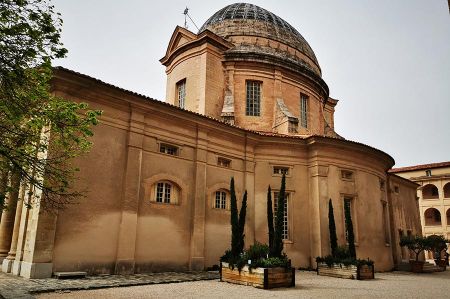Vieille Charité - poorhouse converted into museums
- Written by Portal Editor
Similar to the Fuggerei in Augsburg, we came across the Vieille Charité in Marseille, a building complex of social housing or poor housing, which are now real attractions in the old town due to their conversion into museums and the impressive building structure.
The Vieille Charité now houses the archaeological collections of the Musée d'Archéologie Méditerranéenne and the Musée d'Arts Africains, Océaniens, Amérindiens.
About the Fuggerei in Augsburg
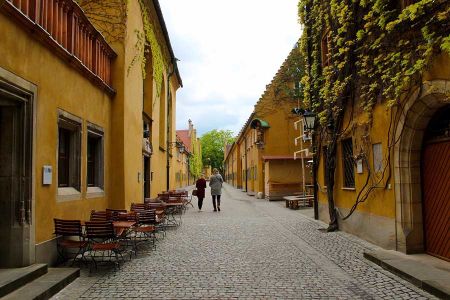 The Fuggerei is considered to be one of the oldest social housing projects still in existence in the world and can be visited by appointment. Alongside Augsburg Town Hall, the Fuggerei is probably the most popular tourist destination in the city. There is an admission fee to visit, which is used to maintain the Fuggerei. In 2006, the Fuggerei Museum was significantly expanded and redesigned. It also houses the last apartment in its original condition, which was furnished in the style of the 18th century. Since 2007, a fully furnished show apartment in Ochsengasse has shown how Fuggerei residents live today. In Augsburg, it is a terraced housing development that Jakob Fugger "the Rich" had built and maintained for poor citizens in 1521. Today, 150 needy Catholic Augsburg citizens live in the 140 apartments in a total of 67 houses for an annual rent of 0.88 Euros. In return, they say a Lord's Prayer, a profession of faith and a Hail Mary once a day for the founder and the Fugger family. To this day, the social housing development is maintained from Jakob Fugger's foundation assets.
The Fuggerei is considered to be one of the oldest social housing projects still in existence in the world and can be visited by appointment. Alongside Augsburg Town Hall, the Fuggerei is probably the most popular tourist destination in the city. There is an admission fee to visit, which is used to maintain the Fuggerei. In 2006, the Fuggerei Museum was significantly expanded and redesigned. It also houses the last apartment in its original condition, which was furnished in the style of the 18th century. Since 2007, a fully furnished show apartment in Ochsengasse has shown how Fuggerei residents live today. In Augsburg, it is a terraced housing development that Jakob Fugger "the Rich" had built and maintained for poor citizens in 1521. Today, 150 needy Catholic Augsburg citizens live in the 140 apartments in a total of 67 houses for an annual rent of 0.88 Euros. In return, they say a Lord's Prayer, a profession of faith and a Hail Mary once a day for the founder and the Fugger family. To this day, the social housing development is maintained from Jakob Fugger's foundation assets.
The Vieille Charité is more of a prison for the poor
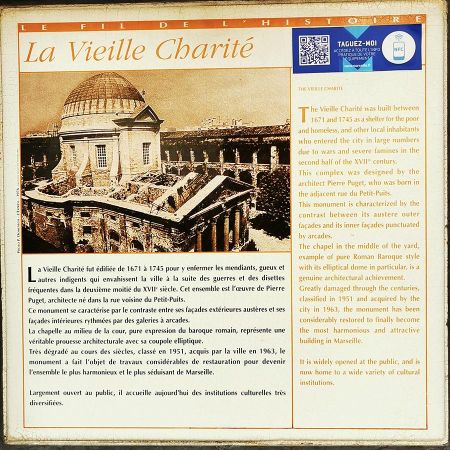 The Vieille Charité is a comparable project to a former poorhouse in Marseille, but with a completely different background. In order to "house and reunite" the very numerous beggars and vagabonds in Marseille at the beginning of the 17th century, the Marseille City Council decided in a meeting following the royal edict of 1622 on the "imprisonment of the poor and beggars", to "confine the poor natives of Marseille in a clean place chosen by the consuls".
The Vieille Charité is a comparable project to a former poorhouse in Marseille, but with a completely different background. In order to "house and reunite" the very numerous beggars and vagabonds in Marseille at the beginning of the 17th century, the Marseille City Council decided in a meeting following the royal edict of 1622 on the "imprisonment of the poor and beggars", to "confine the poor natives of Marseille in a clean place chosen by the consuls".
The suppression of begging was carried out vigorously and often even brutally. Guards called "hunters" were responsible for arresting beggars: foreigners were expelled, Marseillais were imprisoned in the hospice. These guards often had problems with the local population, who often sided with the beggars. The hospice was to have workshops in which beggars were employed in various productions. The children were placed as servants or apprentices to tailors or bakers.
Magnificent building with no windows to the outside
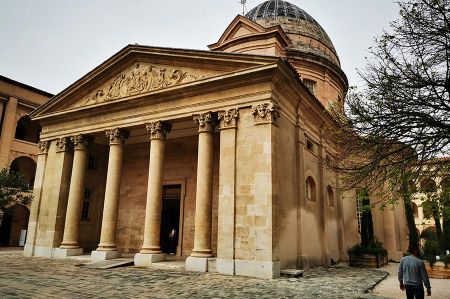 Under the name "Notre Dame de la Charité", the city made available land near the Major's Cathedral, Place de l'Observance, on the northern slope of the Butte des Moulins on which the building was to be erected. But it was not until almost twenty years later, on June 24, 1643, that the foundation stone for the construction of temporary premises was laid thanks to the persistence of Emmanuel Pachier, the theological canon of the cathedral. The first destitute people were admitted in June 1643.
Under the name "Notre Dame de la Charité", the city made available land near the Major's Cathedral, Place de l'Observance, on the northern slope of the Butte des Moulins on which the building was to be erected. But it was not until almost twenty years later, on June 24, 1643, that the foundation stone for the construction of temporary premises was laid thanks to the persistence of Emmanuel Pachier, the theological canon of the cathedral. The first destitute people were admitted in June 1643.
The architect Pierre Puget had designed a three-story arcade gallery enclosing a rectangular courtyard and a chapel. The building was intended to accommodate the sick, the poor and the homeless, but also for families who had lost their homes due to the construction of the stock exchange in a demolished district at the Vieux Port.
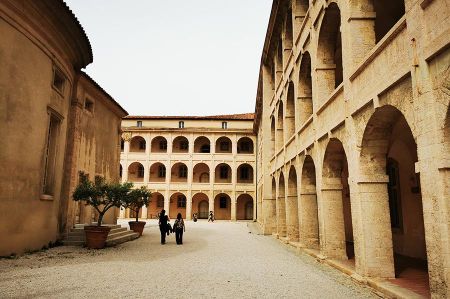 Built in pink and white sandstone from the Couronne quarry, the entire Vieille Charité is made up of four wings closed to the outside and open to a rectangular courtyard by galleries on three levels, giving rhythm to life inside the building. The four wings of the building form a rectangle of 112 × 96 m whose external walls have no windows. The body of these buildings is made up of three floors of superimposed galleries with semicircular arcades opening onto an 82 × 45 m courtyard.
Built in pink and white sandstone from the Couronne quarry, the entire Vieille Charité is made up of four wings closed to the outside and open to a rectangular courtyard by galleries on three levels, giving rhythm to life inside the building. The four wings of the building form a rectangle of 112 × 96 m whose external walls have no windows. The body of these buildings is made up of three floors of superimposed galleries with semicircular arcades opening onto an 82 × 45 m courtyard.
In the center of this quadrangle, in line with the entrance door, is a chapel with an elliptical dome in the best Baroque style. The porch with Corinthian columns in the style of the Second Empire takes up the theme of mercy receiving destitute children, surrounded by two pelicans that feed them. It was built between 1861 and 1863 by Blanchet, architect of the Marseille hospices.
Poorhouses common in many cities
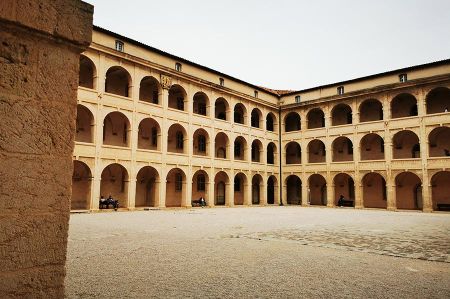 Basically, the poorhouses were mainly used by older people who could no longer support themselves. They were given a place to live and daily meals there. Poorhouses used to be part of the cityscape and only took in impoverished residents from their own city. Almost every village had its own poorhouse. Foreigners were not given this old-age provision. In contrast to workhouses, poorhouses were generally not closed institutions and admission was - at least formally - voluntary.
Basically, the poorhouses were mainly used by older people who could no longer support themselves. They were given a place to live and daily meals there. Poorhouses used to be part of the cityscape and only took in impoverished residents from their own city. Almost every village had its own poorhouse. Foreigners were not given this old-age provision. In contrast to workhouses, poorhouses were generally not closed institutions and admission was - at least formally - voluntary.
Poorhouses were generally financed by donations from wealthy citizens and by grants from the city and church. In rural areas, care for the poor was also partly paid for from the common good (common land). If you walk through the cities today, you will find numerous homeless people who are only occasionally given a bed to sleep in. So, you can certainly ask yourself whether modern states should call themselves welfare states. Or rather, only industry, capital and profit counts. People are often left behind.
Run-down and neglected - demolition threatened
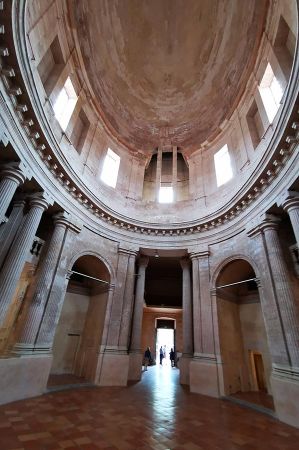 As the housing of the poor became less and less acceptable to the citizens, the number of residents gradually decreased and in 1781 there were only 250 poor people. Could the number of poor people has decreased? Hardly. At the end of the 19th century, the building complex gradually lost its purpose and in the 1950s it was on the verge of being demolished because it was only inhabited by very poor residents who vegetated in the rooms under miserable conditions.
As the housing of the poor became less and less acceptable to the citizens, the number of residents gradually decreased and in 1781 there were only 250 poor people. Could the number of poor people has decreased? Hardly. At the end of the 19th century, the building complex gradually lost its purpose and in the 1950s it was on the verge of being demolished because it was only inhabited by very poor residents who vegetated in the rooms under miserable conditions.
Numerous acts of looting and vandalism contributed to the decay of the building. In the 1940s and 1950s, almost 150 families lived there in precarious conditions; around thirty sisters lived in the same house to care for the poor. After the Second World War, the building was used to house victims of German destruction. The chapel and hospice were then classified as a historical monument by decree of January 29, 1951. After being occupied for several years, the complex was evacuated in 1962 due to its state of disrepair and only underwent a complete restoration in recent years. Concerts and exhibitions have been held in the building since 1985. The entire building complex underwent extensive renovation in the 1960s to 1980s and is now one of the many cultural institutions in the city of Marseille.
Please read as well:
Mistral strong winds at the Plage de Prado bay
Danziger Goldwasser and other abnormalities
-
 Vieille Charité – former home for poor people
Vieille Charité – former home for poor people
Vieille Charité – former home for poor people
Vieille Charité – former home for poor people
-
 Vieille Charité – former home for poor people
Vieille Charité – former home for poor people
Vieille Charité – former home for poor people
Vieille Charité – former home for poor people
-
 Vieille Charité – former home for poor people
Vieille Charité – former home for poor people
Vieille Charité – former home for poor people
Vieille Charité – former home for poor people
-
 Vieille Charité – former home for poor people
Vieille Charité – former home for poor people
Vieille Charité – former home for poor people
Vieille Charité – former home for poor people
-
 Vieille Charité – former home for poor people
Vieille Charité – former home for poor people
Vieille Charité – former home for poor people
Vieille Charité – former home for poor people
-
 Vieille Charité – former home for poor people
Vieille Charité – former home for poor people
Vieille Charité – former home for poor people
Vieille Charité – former home for poor people
-
 Vieille Charité – former home for poor people
Vieille Charité – former home for poor people
Vieille Charité – former home for poor people
Vieille Charité – former home for poor people
-
 Vieille Charité – former home for poor people
Vieille Charité – former home for poor people
Vieille Charité – former home for poor people
Vieille Charité – former home for poor people
-
 Vieille Charité – former home for poor people
Vieille Charité – former home for poor people
Vieille Charité – former home for poor people
Vieille Charité – former home for poor people
https://www.alaturka.info/en/france/marseilles/6656-vieille-charite-former-poorhouse-converted-into-museums#sigProIda5de38dbf5
